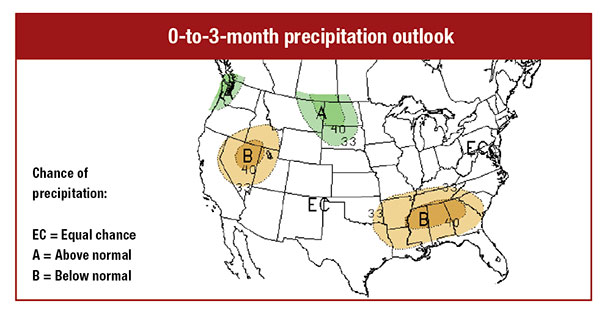What is my marketing plan? Declines in deferred feeder cattle futures make preconditioning for 45 to 60 days a tougher decision than in years past. This is the time to be analyzing all options, including selling directly off the cow, preconditioning for 45 to 60 days, retaining ownership onto wheat pasture or the feedyard, etc.
If you purchase bulls in the spring, consider doing so in the fall. At times, these bulls can be purchased cheaper due to being younger with reduced development costs. There are also advantages to bulls continuing their development prior to breeding season on the terrain in which they will be expected to perform.

As fall calving begins, be sure to watch for heat stress and try to maintain a clean calving area. After calving, crude protein requirements of the cow increase 30 percent, while energy requirements increase 50 percent, so adjust feeding programs appropriately.
Winter stockers
September in the Southern Plains means time to get cool-season pastures planted for grazing and time to purchase calves. When purchasing calves, it is imperative to have a receiving plan developed with a veterinarian, nutritionist and your crew. The more details known about the cattle before they arrive will result in a better plan.
What weight and sex will be purchased? What is their vaccination history? Where are they coming from? These questions will help determine necessary vaccinations, whether or not metaphylactic antibiotic is necessary, type and amount of feed needed for receiving, and necessary labor.
Summer stockers
Providing supplemental protein to stocker cattle grazing warm-season pastures in late summer is a proven practice. This is known as the Oklahoma Gold program and consists of providing a 38 percent protein cube containing an ionophore at the rate of 1 pound per head per day for a 500-pound calf. The average supplement conversion ratio of this feeding program was 2.7 pounds of feed per pound of additional gain, according to several trials at Oklahoma State University.
As the grazing season wraps up, don’t let hard work be wasted through excessive shrink. Have a shipping plan to minimize shrink through the use of low-stress cattle handling and minimizing the distance cattle need to travel prior to loading. ![]()

-
Bryan Nichols
- Livestock Consultant
- Noble Foundation
- Email Bryan Nichols







